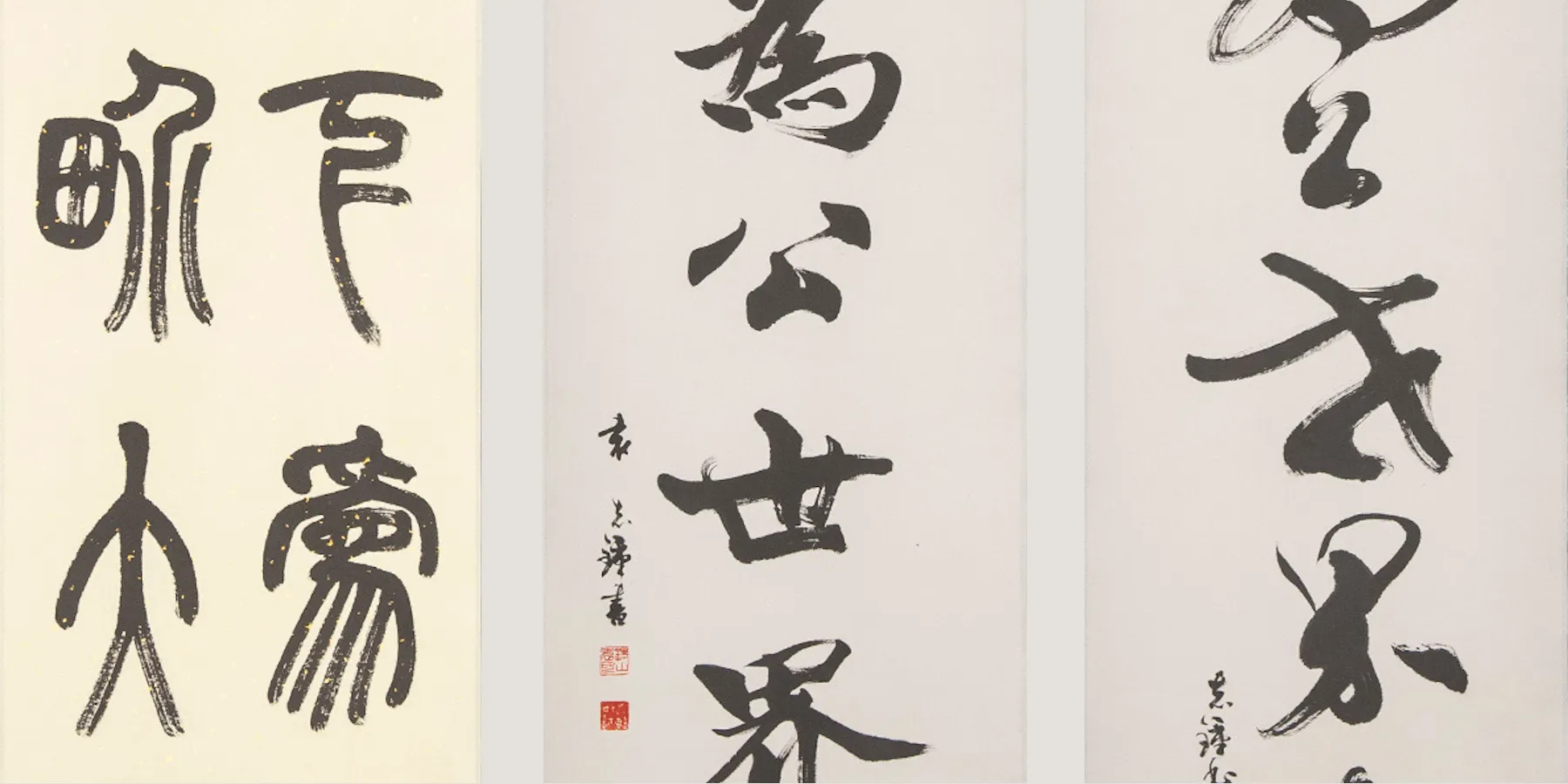Abstract
The popularity of portraits of clinicians during the COVID-19 pandemic suggested the importance of visual representation of what mass illness demands of us all—and particularly those on the front lines of health care. In addition to surges in variants of the SARS-CoV-2 virus, persons of Asian descent have endured waves of bigotry and violence. With the myriad of natural and man-made threats confronting the world today, an ancient Confucian proverb on the common good prompts us to recognize humanity’s shared future. Although text-based, calligraphy is visually engaging and reminds us of the importance and poignancy of words that are well chosen and beautifully rendered. This article displays and describes Chinese calligraphies by Terry Zhizhong Yuan, commissioned by the AMA Journal of Ethics, to commemorate the American Medical Association’s 175th anniversary and the extraordinary times in which we live.
If I were born Chinese, I would not be a painter but a writer. I’d write my pictures.
Pablo Picasso1
One World
Regardless of where you were born and with which ethnicity or nationality you identify, the COVID-19 pandemic has compelled all of us to face our interconnections and to recognize that individual well-being is invariably tied to collective welfare. More than 2500 years ago, Confucius professed that, with one world, people needed to work together and help each other if humanity is to secure a prosperous and healthy future. This ancient Confucian ideal of great harmony or datong (大同)2 has contemporary relevance as we struggle to overcome ideologies of hate and planetary existential threats.
Chinese calligraphy is unique in that it is both a visual art form and a mode of written communication. This duality beckons us to contemplate where the boundaries are between functional writing and visual art.
Three Styles
Chinese calligraphy includes 5 basic script styles.3 Calligraphies in 3 of these styles were commissioned by the AMA Journal of Ethics to express the Confucian proverb 天下為公, 世界大同, which can be understood to mean With one celestial home, we must live in harmony. This proverb is artistically written in seal, cursive hand, and regular script styles by Terry Zhizhong Yuan.
Considered the first script style, seal script originated during the Qin Dynasty (221–206 bc). Rendered as pictographs, Chinese characters in seal style are, perhaps, the most difficult to decipher, so Yuan also depicted the Confucian proverb at the bottom of the scroll in a more readable and understandable style.
Figure 1. Confucian Proverb in Seal Script, 2021

Media
Ink on paper, 13.25" by 54".
Originating during the Han Dynasty (206 bc–ad 220), the cursive hand script style is distinctive in that each character can be connected to its predecessor or be separate. Yuan incorporated both cursive script styles.
Figure 2. Confucian Proverb in Cursive Hand Script, 2021

Media
Ink on paper, 13.25" by 54".
Regular script is the style typically used in Chinese textbooks.
Figure 3. Confucian Proverb in Regular Script, 2021

Media
Ink on paper, 13.25" by 54".
References
-
Roy C. L’Amour de la Peinture: Goya, Picasso et autres Peintres. Gallimard; 1956.
-
Chen AHY. The concept of “datong” in Chinese philosophy as an expression of the idea of the common good. University of Hong Kong Faculty of Law research paper 2011/020. Social Science Research Council; 2011. Accessed May 2, 2022. https://deliverypdf.ssrn.com/delivery.php?ID=685005098086027126120117124024097065050036005007020023098100023075024117018022125006057031008034110026040023107118024112087102051020003005085069098116006121126001118021010085091071114087070123004098120077087113078080122026112080007089065064065095093069&EXT=pdf&INDEX=TRUE
-
5 basic script styles in Chinese calligraphy. Columbia University. Accessed May 2, 2022. http://www.columbia.edu/~xc2282/calligraphy/calligraphy.html



